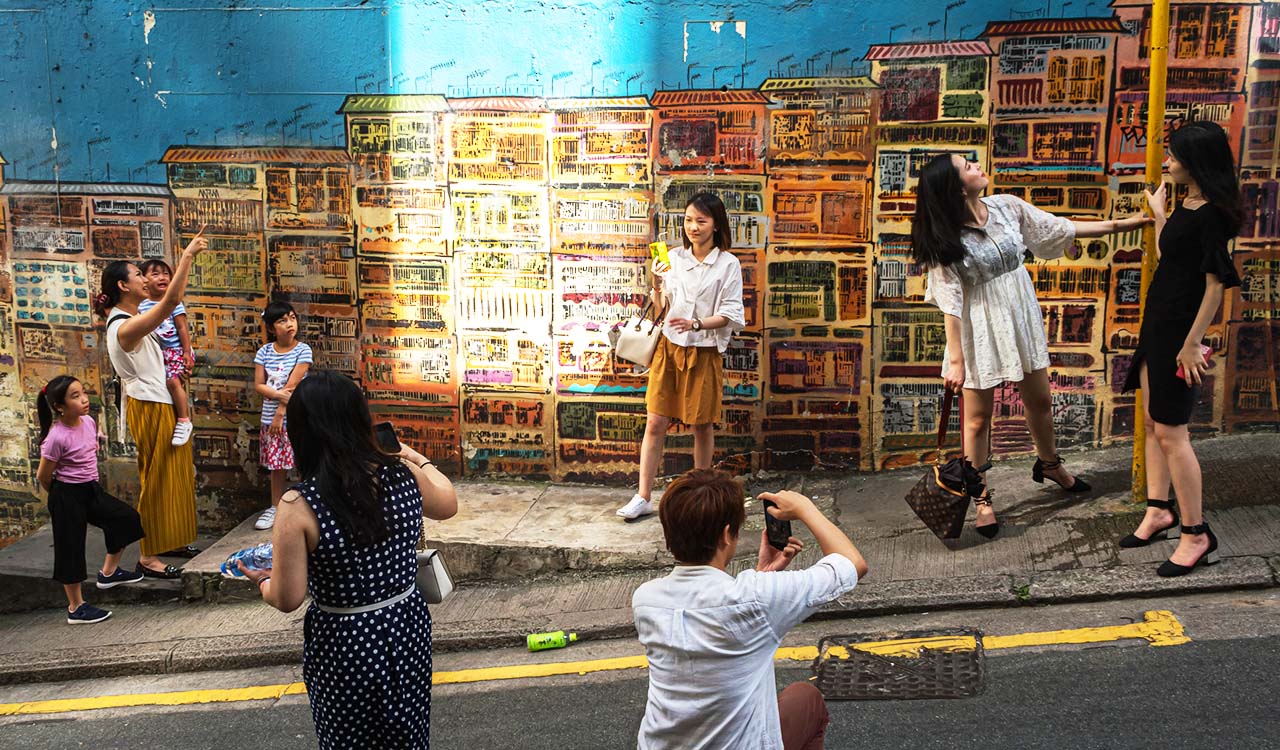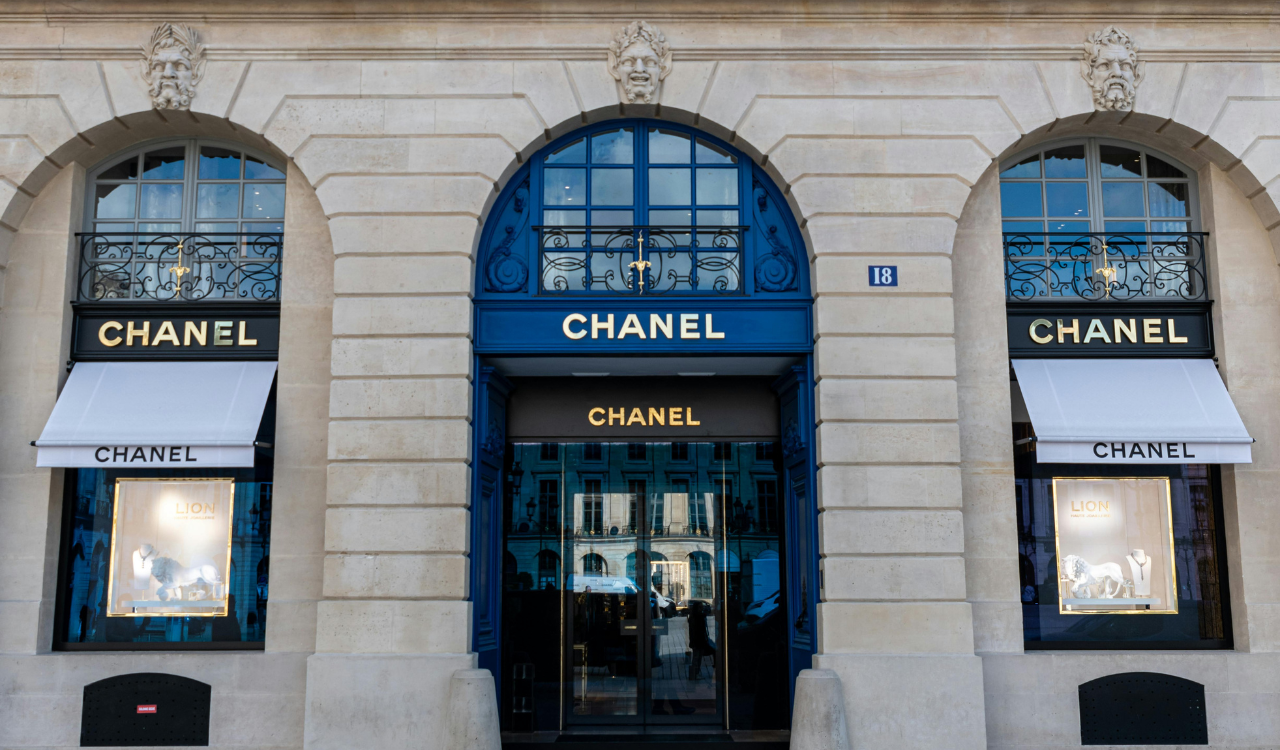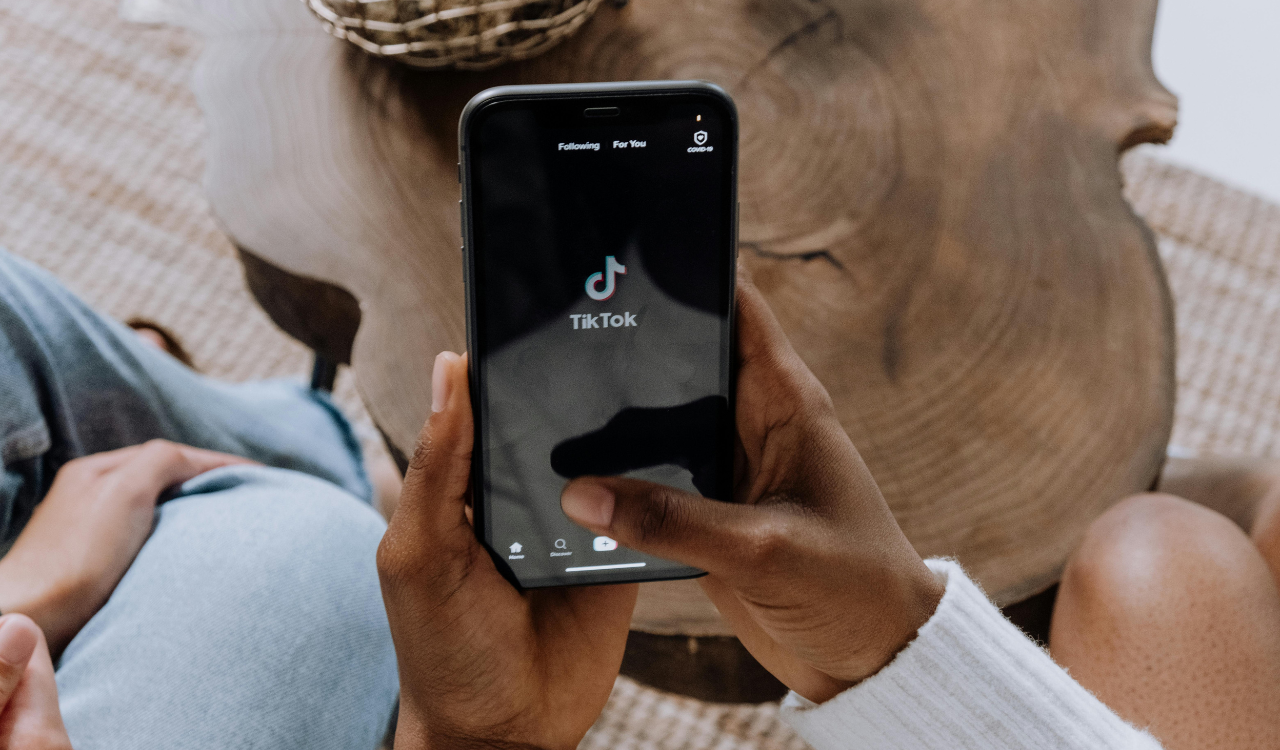Every day, hundreds of tourists, often in large tour groups from Korea or Mainland China, stop at a graffiti mural on the corner of Graham Street and Hollywood Road in Central Hong Kong. It depicts Yaumati, a famous Hong Kong neighborhood, and takes up the entire side of the flagship store of Goods of Desire (commonly abbreviated as G.O.D.). G.O.D is a 30-year-old retailer that uses pre-handover Hong Kong iconography and themes (the Yaumati scene is one of its signature prints) in its funky reinterpretations of Chinese fashion and homeware. It is an Instagrammable moment for hundreds of social fans.
Hong Kong brands often trade in ironic, sometimes risqué reinterpretations of familiar cultural items. Another one of G.O.D.’s signature designs is the Angry Cat—a cheeky riff on the Japanese Maneki-neko, or ‘fortune cat’, which traditionally sit in shopfront windows waving in good luck. (G.O.D.’s version has the cat making a different, ruder, gesture.)
While G.O.D. proudly notes on its website that the mural is one of the city’s “most Instagrammed walls,” when I visited the shop on a busy Sunday afternoon during “Golden Week” (a long holiday for China, Japan and other East Asian countries anchored around International Labor Day on the first of May), only a few shoppers circulated in the store, despite the throngs Instagramming outside. This is the bane of retailers with social moments that outweigh the merchandise.
“The visitors who take pictures are not usually our customers,” says one of the shop managers, although occasionally some will wander in “for small items. A keychain. Maybe a pair of socks.” As if on cue, a young Korean couple starts making their way to the checkout counter, each holding an identical pair of socks as souvenirs.
Social Media Tourism in China
Hong Kong received 213,0000 visitors from Mainland China during the first day of the Golden Week holiday—a welcome boost for practically the only Asian city left behind by the world’s post-Covid tourism boom. Over 919,000 Chinese visitors came over the entire holiday period, over 21 percent more than the year before. Hong Kong has clawed its way back onto global travelers’ bucket lists through a tremendous investment in exposure, including in particular enlisting social media influencers from China and elsewhere to visit and post about their experience.
Social media-enabled tourism, however, has proven to be a double-edged sword for Hong Kong. Large numbers of Asian travelers now use Instagram and other platforms to plan and execute their itinerary. Travelers to Hong Kong increasingly dash around the city to hit a set of sights using the guidance of social media influencers or lists of Instagrammable venues. Often this is done with military precision (and, unfortunately for local retailers, on a tight budget) by groups of young Mainland Chinese tourists, who have been given rise to a trend known as “special forces” tourism.
Grab and Gone
Social media has successfully lured new visitors to Hong Kong, but has created a new class of tourism that isn’t translating to retail spend. Tourists do stop and make purchases—particularly if their impulse buys also create post-able moments. This has created a mini-boom for artisanal bakeries, bubble tea shops and traditional Hong Kong milk tea houses. Three local Hong Kong bakery chains—The Bakehouse, Vission Bakery, and Tai Cheong — have risen to Instagram stardom as a must-visit stops along the Graham Street graffiti walking tour. Signature packaging allows ‘Grammers to take selfies and shoot unboxing videos as soon as they’ve made their purchases.We’ve seen a great amount of business this Golden Week. Everyone found us through someone else’s Instagram posts, and everyone takes a photo with their own purchases,” says a counter worker at Vission, describing how a global following for its matcha mochi Danishes and decorative cakes was organically built up on social media.
This is beginning to have an impact on the hospitality scene along Hong Kong’s Instagram Trail. “I know several restaurant owners in Central that have decided to switch their fit-outs from dine-in to grab-and-go bakeries, because that seems to be what the tourists want,” says a restauranteur in Hong Kong’s Central district.
Social Strategies
Other hospitality brands have tried more active and engaged social media strategies, with some limited success. When the American streaming sensation IShowSpeed made a highly publicized trip to Hong Kong, a local pizzeria enjoyed a moment of online buzz when it posted an Instagram reel showing its attempts to deliver him a pizza. Although the YouTuber quickly gave it back when his fellow passengers warned him that eating on Hong Kong trains is illegal, the pizza box was highly visible in his hands for a few precious seconds.
British extreme eating online personality Big John recently increased the popularity of a few Hong Kong bars and restaurants when he paid a visit. According to restaurant industry professionals, however, Big John’s fan base of largely teenage boys only created headaches for the doormen checking IDs. A third restauranteur reported a reasonable uptick in business after hiring Mainland Chinese online influencers (which can be done for roughly $3,000 to $5,000) to post their dining experiences, but that the per-patron spend was less than expected. “Everybody got sharing plates or split appetizers family style.”
A Hong Kong Inside Joke
Another challenge that even the most iconic ‘Gram-friendly’ brands and retailers in Hong Kong face is that they are selling to an extremely narrow niche market. Many of Hong Kong’s more unique shopping destinations are refurbished heritage sites—among them PMQ, Tai Kwun and Central Market—and house collections of local fashion microprenuers and designers whose brands in part depend upon a nostalgic, and often campy appreciation of local culture and history. The signage and design elements of many local brands and eateries drawing from styles Hong Kong’s postwar boom times or the classic kung fu movies. One of Hong Kong’s original nostalgic brands, Shanghai Tang, began taking styles from even earlier eras, and to this day its fashion collections still evoke jazz-era 1930’s Shanghai and 1940’s Chinese Communist Party chic.
Hong Kong brands often trade in ironic, sometimes risqué reinterpretations of familiar cultural items. Another one of G.O.D.’s signature designs is the Angry Cat—a cheeky riff on the Japanese Maneki-neko, or ‘fortune cat’, which traditionally sit in shopfront windows waving in good luck. (G.O.D.’s version has the cat making a different, ruder, gesture.) Some wonder if leaning so heavily on in-jokes to sell local fashions and tchotchkes misses out on a broader audience—particularly those tourists who currently make up the bulk of visitors. “What tour group of Chinese or Korean retirees wants to buy the same familiar trinkets they see at home? Will they even appreciate the irony?” asks the Central-based restauranteur.
Hong Kong’s self-effacing, irreverently reverent style certainly has its admirers. “We have many fans,” says the G.O.D. store manager, such as European expats that have been in Asia a long time, and in particular Malaysian Chinese tourists “who really seek out our modern reinterpretations of classic Chinese designs.” However, unlike the global aficionados of K-Culture and J-Culture (Korea and Japan, respectively), the worldwide HK-Culture fanbase is likely too small to support a substantial cultural export industry.
Are You Experiential?
Hong Kong, like Asia’s other traditional shopping hubs, has been in a state of flux since the pandemic. Asian regional tourism levels in 2024 have still not climbed back to pre-Covid numbers (with the notable exception of Japan which, as we’ve reported, continues to wrestle with its deluge of tourists). Digital outreach has helped Hong Kong build its volume, but is has not moved the needle much of retail sales, and this, compounded with the exorable cannibalization of digital shopping platforms, means that Golden Week holidays and or other shopping-themed events are insufficient means to sustain Hong Kong’s destination retail business.
There are indications, however, that Hong Kong is beginning to turn a corner in its quest for higher-value experiential retail—and ironically digitalization and the long tail of the pandemic have actually accelerated this transition.
Hong Kong’s years-long lockdown served as a mother of invention for many high-end retailers, which were forced to reimagine their customer transactions through a digital lens to revive sales. Luxury brands in Hong Kong, as elsewhere in Asia, have been working to “phygitalize” their retail experience, and this is quickly dovetailing with another trend impacting technology decision-making: the move towards large-footprint ‘experiential’ retail establishments which mix shopping with restaurants, spas and other leisure offerings, and dedicated spaces and services for VIP clients.
Louis Vuitton plans to open a 40,000-square-foot megastore in 2026 in Hong Kong’s K11 MUSEA – a high-concept mall which blends luxury retail and curated art spaces; the luxury giant reportedly will reserve significant floorspace for a museum, cafes and a lounge for key customers. Prada, which closed its pricey Hong Kong flagship in 2020, is also reported to be joining LV at K11 MUSEA with a new 8,000-square-foot flagship. Prada has only dabbled in hospitality and luxury lifestyle experiences; Prada Caffè operates in London’s Harrod and at Prada Resort, its luxury ‘members club, and the brand has been incorporating skincare and other wellness offerings in some of its flagships. It is more than likely that some of this will be replicated when they open at K11 MUSEA next year.
All of this will require fashion retailers to undergo still more digital transformation, in the words of a Hong Kong-based technology executive for a global brand: “Selling coffee is different from selling clothes; it requires new Point of Sales systems, and maybe even different ERP systems.”
The Lonely Planet to White Lotus Pipeline
Cheap travel can be cheerful. A steady stream of globe-trotting backpackers, toting iconic Lonely Planet guidebooks, served as the cornerstone of the tourism industries of Thailand, Indonesia’s Bali and other Asian destinations. Welcoming budget travelers helped Thailand, which serves as the backdrop for the latest season of HBO’s luxury resort dramedy The White Lotus, build a tourism sector that makes up almost a fifth of the country’s annual GDP, which includes an estimated $5 billion in luxury tourism spending.
Today’s thrifty and speedy Special Forces travelers from China and elsewhere offer Hong Kong a similar opportunity. Instagram-propelled tourism has already built a deeper global appreciation of the city as a destination, and has fostered appreciation of established and emerging iconic brands in Hong Kong, even if there is not yet much in the way of retail sales to show for it. Budget travelers continue to cause concern among Hong Kong economic planners, who have been frantically rolling out plans to make the city more attractive to high-spending families and luxury travelers.
But what policymakers are overlooking in their panic is that Special Forces and other ‘Gram-fueled tourists can serve many roles. Currently they act as ‘shock troops,’ and while many are not big spenders, they definitely contribute to Hong Kong’s growing social media visibility. Over the longer term, they may also serve as an important aspirational demographic: one that is well-attuned to navigating digital channels to customize their travel and retail experiences in Graham Street today and may graduate to the VIP pleasure palaces of Hong Kong’s luxury flagship stores in the years to come.





